 Your new post is loading...
 Your new post is loading...
In June 2015, a new, hyperspecific website named Van Winkle’s went live. It was billed as an online destination for “all aspects of sleep and various nocturnal adventures” by its editorial director, Elizabeth Spiers, formerly an editor at Gawker and the Observer. In its first week, the site’s pieces included a listicle about dream sequence clichés and a 2,800-word feature on the rise of benzodiazepine prescriptions. Its editor-in-chief, Jeff Koyen, heralded it as “the first editorial venture of its kind.” What he meant by that had as much to do with its niche subject matter as it did its funding source: Van Winkle’s was not a traditionally independent journalistic venture, but the latest product of mattress startup Casper.
“We have a long-term vision for Casper to become the dedicated brand for all things sleep, and part of owning that category is owning the best content related to it,” Casper CEO Philip Krim told The Wall Street Journal at the time, speaking pure startup. He later added: “The mandate is to create awesome content and that’s it.”
Narrative gravity is like confirmation bias, “the tendency to search for, interpret, favor, and recall information in a way that confirms one’s beliefs.” But with narratives, it’s less about personal beliefs and more of a bandwagon effect, where everyone processes and interprets information through a framework that is both easily digestible and broadly accepted. Narrative gravity is what makes a startup’s story clock tick. Narrative gravity exists beyond tech. It’s why Senator John McCain is still considered a maverick and why Tiger Woods’ big comeback is always right around the corner. The gravitational pull of a prevailing narrative is hard to resist....
Some 23 per cent of news articles contain a social media embed, and 10 per cent of these embeds have either been modified or removed by their author since the article's publication, shows a report released today by SAM.
Social media curation platform SAM analysed one million web pages using its Report Card tool, focusing on North American news sites such as New York Daily News, Fox News, Vox, CNN or Forbes, to find out more about the role social media plays in newsgathering today.
The Report Card is available for free and enables publishers to find out how many social media embeds are currently on their websites and whether they have broken or they have been edited since publication....
From LocalLabs to GoLocal24 to Everyblock, hyper-local news startups have consistently collided with foreboding economics: Narrow audiences tend to be small audiences, and small audiences are hard to monetize. But Ripple founder and CEO Razmig Hovaghimian, who previously made splashes with Embrace and Viki, thinks his latest project could build a more successful business model for hyper-local news — and several heavyweight funders are buying in. "I want [Ripple] to be a platform where storytellers get not only recognition and satisfaction from it, but compensation as well." -Razmig Hovaghimian EarlIer this month, Hovaghimian and his six-person team launched Ripple, a hyper-local news app that uses geo-location technology to help users discover the stories closest to them. Backed by Greylock Partners, Knight Foundation, MIT Media Lab director Joi Ito and other funders, Ripple has now launched in ten cities, including San Francisco and New York, and Hovaghimian says more locations are coming soon. source of enthusiasm for Ripple is two-fold: First, by combining geo-mapping technology with a voting system that allows stories to “ripple out” to a wider audience, Ripple creates an opportunity to produce hyper-local news at scale — a big step toward business viability....
Business Wire’s 2015 Media Survey is now available and it offers startling results about how journalists see the future of news media. The landscape of media is changing – new platforms and new styles. The New York Times is an institution but it didn’t start off as one. How will we be referring to BuzzFeed decades from now? Will the two seemingly different lines of media style intersect at some point in the future? These questions are part of the debate regarding the future of media and journalists are split.
According to an article published in The Guardian back in 2013, BuzzFeed is described as an, “irreverent US news and entertainment website taking the social web by storm” and investor Kazz Lazerow, co-founder of Buddy Media, described the website as “the defining media company for the social age.”
Only a few years ago, BuzzFeed represented the wave of change the digital age brought upon news media and that wave has only continued to grow. Now, BuzzFeed is challenging traditional forms of news, jockeying to become the standard of journalism.
When asked to decide between The New York Times style and the BuzzFeed style, journalists made clear that while the classical form isn’t going anywhere, it will have to share its place at the top....
All too often, we learn of revolutions in police states of third world countries from citizens on social media. This week, the stories and images online looked like a world away but unfortunately it was close to home. The stories of Ferguson, MO became national stories as they were shared by media and citizens on social media.
As the evolution of journalism continues on social media, storytelling through real-time mobile video is the latest shift. On Thursday, filmmakerCasey Neistat traveled to Ferguson with Vice News to cover the story for 24 hours. If you are not familiar with Casey’s work, check out his acclaimedYouTube channel to view.
In recent months, he began using Snapchat to share video stories and later posts to his Snapchat Stories YouTube channel. Instead of putting words in his mouth, I’ll let him explain...
A look at some of the ways in which mobile journalism, drone journalism, social media and crowdsourcing is being maximised by investigative journalists...
What happens when the age-old practice of investigative journalism collides with emerging technologies and new media?Potentially powerful things, according to a panel at yesterday's BBC social media conference, which looked at some innovative ways investigative reporters are using the latest technology to power their journalism....
New Jersey Governor Chris Christie is a meat eater and Newark Mayor Cory Booker is a vegetarian. That is what we learned last night in the first exclusive Instagram video interview of a political figure. Posted by the up-and-coming mobile video news company NowThisNews, this is the first of five installments to be posted this week.
The series poses one question each day to the Newark Mayor and U.S. Senate candidate. Within the constraints of the Instagram Video format, Booker has about 15 seconds for his answer. In yesterday’s post Democrat Booker illustrated at least one disagreement and difference between himself and Republican Governor Christie. NowThisNews says this is the first interview of a political candidate ever posted exclusively to Instagram. Booker, who is a pretty fast talker, may have been a politician made for Instagram....
Does working in PR make me a kissing cousin to Darth Vader? After all, I used to be a reporter – I was one of the hundreds of casualties...
... This is the reason why so many reporters are choosing to go into PR. We’re in the unique position of having been on the receiving end of countless press releases and pitches. Many of my former Herald colleagues are now doing PR work for both businesses and nonprofits. Some have started PR firms of their own. So, reading a recent Buffalo News article about TV reporters joining the PR ranks made me think about how annoying it is when I’m told I’ve “gone over to the dark side.” This is not Star Wars and it’s not that simple.
First and foremost, many of us simply reached the point where we needed a little more job stability than newspaper reporting could provide. Because right now most people working in print newsrooms are enduring increased workloads – picking up the slack after all the layoffs and resignations – while having their pay slashed....
The media industry may be hurting, but journalism -- and access to information -- is flourishing. Journalists may just have to work smarter, and network more, to keep up.... Journalism is not in crisis. The media industry — and journalists — might be, but the journalism itself is actually improving. Such is the argument made by international documentary filmmaker Bregtje van der Haak and Annenberg professors Michael Parks and Manuel Castells in a recently published article about “Networked Journalism.” As the authors see it, the problem is that most of the doomsayers mix the concept of journalism with the business of journalism. In their article, journalism is defined as the “production of reliable information and analysis needed for the adequate performance of a democratic society.” Not mentioned in the definition are “profits,” “professional journalists” or “traditional publishers.” Just the pursuit of reliable information....
When big news breaks, a common impulse is to turn to CNN, but the network suffers from self-inflicted damage. ...So what is the real damage of a midweek stumble in a very complicated story? When the story was breaking on Friday, CNN had its biggest nonelection rating in 10 years. People at CNN said that they got significant blowback from sources, but Mr. Zucker seemed fine with the overall effort, issuing a hero-gram to the staff on Friday, before the final chapter unfolded. “All of you, across every division of CNN Worldwide, have done exceptional work,” the memo read. “And when we made a mistake, we moved quickly to acknowledge it and correct it.” That’s one way to spin it. I talked to several competitors who did not commit the same error, and one spoke for many when he said: “It was bad enough — really, really bad — so that they made all of us look terrible. Nobody comes away a winner from something like this.” If legacy media were falling short, the new order did not look all that promising either. A crowd-sourced witch hunt took place on Reddit, identifying innocents as suspects, and Twitter was alive with both misinformation and outrage at the mistakes. (There were many curiously triumphal posts about the death of old media in Twitter feeds that were full of links to that same old media.)...
The week of the Boston bombings has been a cascade of embarrassments for the news industry. On Wednesday, CNN falsely reported that arrests had been made. The New York Post, never known as a pillar of journalist ethics, sunk to a new low with a front-page photo on Thursday of two young men, captioned, “Feds seek these two pictured at Boston marathon.” The only hitch: These weren’t the suspects. One of them says he’s now afraid to leave his house. But should these media fails really surprise us? Those who have been paying attention know that media bosses have been in a race to the bottom for over a decade. As journalist Nate Thayer describes it, “Not only have all the editors and others responsible for ensuring balanced and accurate story, which was crucial to ensuring believable information, been eliminated in budget cutbacks, but the more overwhelming new reality is the age of instant in the new borderless digital information age.”
“Twitter does its best work in the first five minutes after a disaster, and its worst in the twelve hours after that.” - @rolldiggity There is a quiet that descends in a newsroom when a big story breaks.... Twitter has often been touted as the “first with news”. From the miniscule to the massive. From Stephen Fry being stuck in a lift, to the Arab Spring rippling across North Africa, it is the instant source of a story, the first gurgle from a tap. The only way to find out what’s really happening, according to some. But I’m beginning to think that so-called truth is losing some of its polish. I follow about 700 people on Twitter. I actually “watch” about three times that amount. I have lists of people I don’t follow. In other words, I can see them, without having to follow them. News people, experts, specialists, comedians, doctors, police officers, bloggers and bohemians. I’ve been on Twitter for more than three years. I like to think I’ve found much of the gold within its mines. When the first tweets about the Boston marathon explosions popped up in my timeline, I went over to my newsroom colleagues. I told them what was happening. And the process began. And I watched Twitter....
|
Fresco is a lot like Uber. But unlike similar apps where you request a car, takeout, or a even a dog walker, Fresco puts a call out for a photojournalist. A newsroom posts a request for video of, say, a crime scene, and a Fresco user in the area can accept, take a video of it, and upload it to Fresco. If the news outlet uses it, the Fresco user gets paid $50.
TV news stations across the country are using the app, but Fresco is particularly appealing to KTBY, a station in Anchorage, Alaska. Alaska is a big state, and many of KTBY’s viewers live in remote villages that are hours away by plane. It’s hard to cover those communities without spending a ton of money and time. In a Fresco promotional video, Scott Centers, COO of Coastal Television Broadcasting Company, which owns KTBY, marvels that Fresco offers an affordable alternative.
Digital news continues to evolve, pushed by a variety of innovations in recent years, from groundbreaking new technologies like virtual reality and automated reporting to experiments on social platforms that have altered campaign coverage. As journalists and media practitioners gather for the annual Online News Association Conference, here are 10 key findings from recent Pew Research Center surveys and analyses that show how these rapid digital shifts are reshaping Americans’ news habits...
The 18-24 crowd has used the internet as its primary source for news for several years. Now it is specifying “social media” as its main source of news, with that niche overtaking television for the first time. The information comes from a study done by The Oxford University Reuters Institute for the Study of Journalism. It looked at consumers of news and information around the world for its “Reuters Institute Digital News Report 2016.” This is the fifth year it has issued such a report. It’s a fascinating read. 28 percent of 18-24 year-olds say social media is their main source of news, compared to 24 percent who cite television. Since 2013, the number of people in the US who say they get their news from social media has doubled—46 percent now use social media for news....
The Times’ ranking of their most read stories, rather than just the ones that got the highest number of clicks, is a valuable one.
It also shows how publishers can combine metrics available to get a better understanding of the various strands of their audience. What a social audience wants is different to what to what homepage regulars want.
This might be interesting for publishers wondering what the benefits of using social media to push different content to different audiences. The Times’ Opinion Facebook page has a healthy following, but the Facebook pages of individual columnists, like Nicolas Kristof help drive particularly large engagement numbers for the Times on Facebook.
Finally, this data shows once more that there is a place for in-depth, lengthy content on Facebook. Both list contained plenty of stories that showed there’s plenty of interest in longer stories....
As fall approaches, students head back to school. And while busy freelance journalists may not have the time or money to enroll in a college course, there are a number of free online training alternatives right at their fingertips, offering lessons on everything from understanding financial statements to covering healthcare reform.
Here’s a look at six of the top options to consider....
Digital consumption of the news is quickly becoming the norm, with 64.5% of Americans now combing the headlines online.
Police save hostages after militants storm Kenya shopping center with guns and grenades. This just in! TV discovers Twitter. At least that's how it seemed watching a recent national TV news story.
It felt like the early days of the internet, years ago. The CBC-TV news report I viewed fell well short of demonstrating the network knows how to use social media to cover a breaking story.
...Effectiveness of longform So the question we all have about these beautiful layouts. Does it work? Is it more engaging? How do we know? Though Brundrett didn’t have exact numbers to provide, he said their numbers have grown and the audience has developed higher expectations for what they produce.
“We get really great traffic to these pieces, off the charts engaged time, people are reading all the way down the page, great comments and discussion,” Brundrett said. “From a social perspective they get shared like crazy . They do really well for us.”...
Reports on traditional news outlets, such as print and broadcast struggling to be financially viable. are nothing new. In a previous blog post, I quoted a statistic from IBM that claimed 90 per cent of all data has been created in the last two years alone.
With the rise of social media and the ability for anyone with access to a computer to create a blog, the supply of possible news sources has exploded since the web gained mainstream acceptance years ago. The public’s demand for content and news has dramatically increased. However, the exponential growth in supply of news sources such as social media, 24-hour news channels, and everything in between, has created a glut of information effectively driving down the value of real news. This is essentially a supply-and-demand problem. Combined with disruptive technology and better methodologies for advertising, traditional media outlets have been forced to make changes to the ways in which they report and monetize news content....
For a time, Gabrielle Giffords was dead. So was Newtown, Connecticut, shooter Adam Lanza’s father. Or maybe it was his brother in Hoboken, New Jersey. All three, as we now know, are alive. Two of them weren’t even shot. On the other hand, the alleged Boston Marathon bomber is, actually, under arrest. Then he wasn’t. Then he was. How does the news get it so wrong? I’ve spent almost 20 years as a reporter and anchor and have covered more live, fast-breaking stories than I remember. Mistakes happen regularly on cable news because of the inexact and unreliable nature of rolling coverage. But most of the mistakes don’t matter: the exact color of the car, the exact price of the stock, the exact quote from the courtroom. Ultimately, they all get corrected, as rumor and speculation give way to provable fact and hard evidence. Most of the mistakes end up being of little consequence. But the details surrounding the Boston bomber mattered, because the nation was so heavily invested. Americans were on edge, their sense of safety shattered again. Public anxiety was at its height when the news of an arrest first came. The news, it turns out, was wrong. And this one didn’t fix itself....
It’s no longer just journalists delivering information. With social media, the power of information-sharing now rests in the hands of everyday people.... "Contrary to conventional wisdom, one actually has more access to evidence with social media than traditional off-line sources." In some instances, perhaps this is a good thing. But this week, that "evidence" became fodder for hasty accusation, as Redditors attempted to crowdsource the investigation and identification of the Boston Marathon bombers. As the week played out, it became apparent the Reddit search would not trump the one led by authorities. Verification Required Unfiltered information, without context or verification — usually the job of journalists — can be dangerous, as Storyful founder Little points out: When I was a young TV journalist, the phrase ‘golden hour’ meant the early evening light that bathed faces and landscapes in a warm forgiving glow. As a social journalist, I've started to use the term in a different way. I now think of the golden hour as the time it takes social media to create either an empowering truth or an unstoppable lie, when a celebrity death trends on Twitter or an explosive video surfaces on YouTube. In other words, when journalism can matter most....
Social media and journalism are back in the ring this week. They’re both pretty strong contenders, but not without their weaknesses. In the immortal words of Paulie Pennino, let’s blow these punch-outs. In this corner: Journalism As the underdogs trying to maintain a presence and a living wage, we all know journalists have the power of story-telling and, hopefully, credibility, when news breaks. This Nieman Lab post illustrates the timeline of breaking the Boston bombing on Monday. It shows social media users were able to catch events up to the minute, but it’s only when Reuters retweets it that it becomes News. That’s all because of context. Journalism takes its hardest blows when it forgets that its mission is to provide context. To keep up with social media, journos have fallen prey to the allure of being first. Cable news outlets broadcast, and then tweeted, information about the ongoing investigation and hunt for the bomber without verifying information. Instead of relying on their credibility, their only other strength, media outlets engaged in a strange feedback loo....
|



 Your new post is loading...
Your new post is loading...






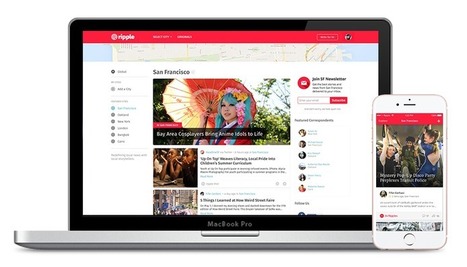
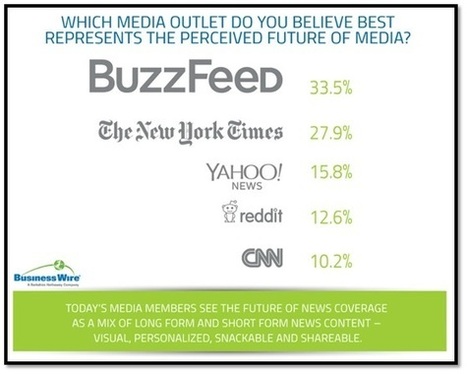







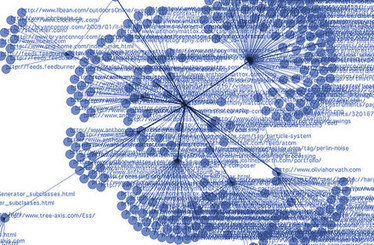




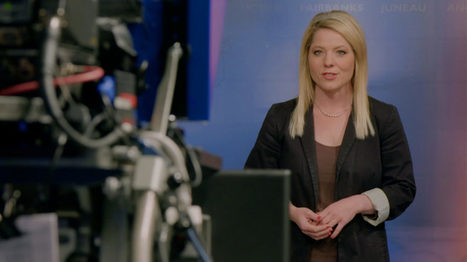

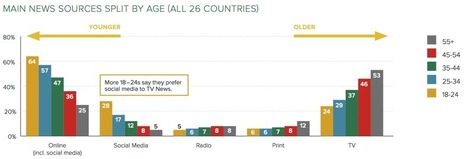

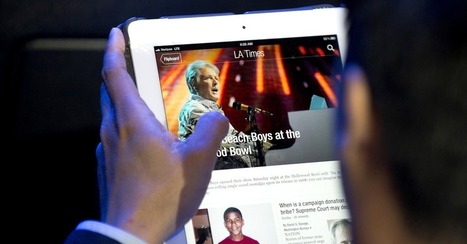



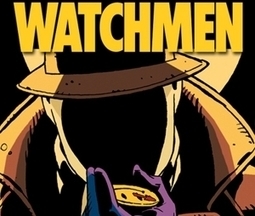








Here's a profile of Van Winkle's "news" and some interesting insight into content marketing and journalism. More recommended reading. 9/10